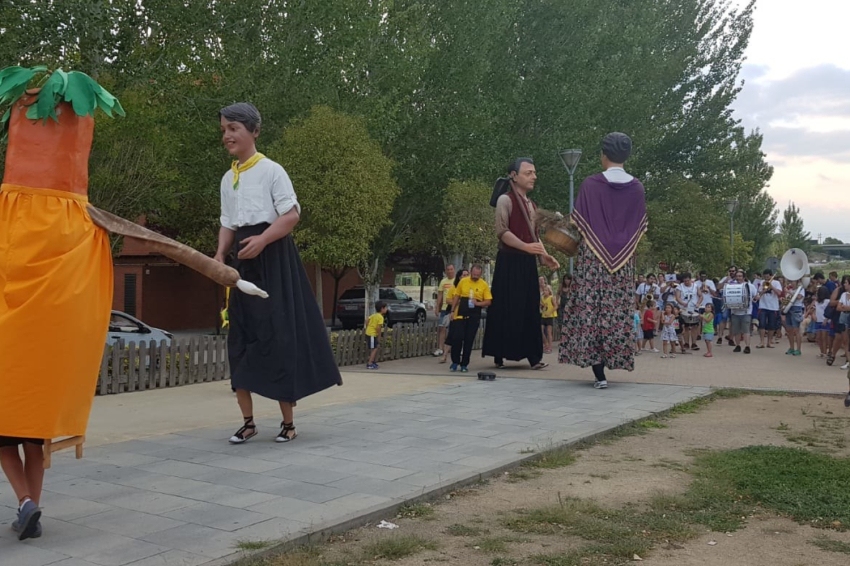Vilanova del Vallès
The municipal area of Vilanova del Vallès was formed in 1984 by segregation of part of the territories ofMontornès and Roca del Vallès, to which the town previously called Vilanova de la Roca belonged.
The urban settlement (urban core) of Vilanova del Vallès has arisen from its location at the crossroads of roads that form the Masnou - Granollers and Sant Adrià de Besòs - La Roca del Vallès roads, in addition to its proximity to the Mogent River.
Agriculture and livestock have been the initial activities of this population center, taking advantage of the areas near the river for the orchard and the rest for the cultivation of cereals.
The industrialization process of the country produced in the late fifties and early sixties, the construction of the highway, the growth of urbanizations during the sixties and the migratory flows produced in the Spanish State, together with the avalanche of second homes promoted by the population of Barcelona, have changed the structure of the population of the center of Vilanova del Vallès.
The Mogent River divides the municipality of Vilanova del Vallès into two geologically very different parts. Its course coincides in its route with the fault that in the North-East, South-West direction limits the Vallès depression.
HISTORY
Between 6,000 and 8,000 years ago, at the end of the Upper Paleolithic and the beginning of the Neolithic, there were already humans in these regions around the Céllecs mountain, today, in part, within the municipal area of Vilanova del Vallès.
This is confirmed by the prehistoric remains found such as the Can Gol Dolmen, the Rock of the Swallows (with cave paintings), the Can Nadal Caves, the Can Gol Covered Gallery and a whole set of small lithic tools: axes and stone points. flint.
Vilanova del Vallès was an independent municipality during the republican triennium between 1936 and 1939. Previously it belonged to the neighboring municipalities of Roca del Vallès and Montornès del Vallès. Unfortunately, municipal independence ended on July 8, 1939, when a resolution from the Ministry of the Interior of Madrid annulled all the sentences approved by the Generalitat of Catalonia at that time. The last plenary session was on June 15, 1939.
After a long process, Vilanova del Vallès once again became municipally independent following a Decree approved by the Generalitat of Catalonia on December 6, 1983. The City Council was established on February 12, 1984.
Nearby routes
See all routes »- Route of the hidden Churches of Baix… (a 5.8 km)
- Modernism Route of summer break in… (a 5.9 km)
- Route in the middle of Gallecs (a 6.4 km)
- Bicycle axis in Gallecs (a 6.4 km)
- The path of the Baleclers of Gallecs… (a 6.4 km)
What to do
Turisme al Vallès Oriental
The Vallès Oriental region is ideal for enjoying tourism with family, friends,…
Museu Arxiu Tomàs Balvey
Cardedeu (a 10.9 Km)The MATBC houses the collection of its creator, Tomàs Balvey y Bas…
Museu Internacional dels Titelles de Catalunya, Masia Can Falguera
Palau-solità i Plegamans (a 9.3 Km)Discover the International Puppet Museum of Catalonia, a space for discovery and…
Rukimon - Rucs del Corredor
Dosrius (a 12.7 Km)Do you want to walk with a donkey? Do you prefer to…
Where to eat
Taverna ümet
Sabadell (a 14.9 Km)Taverna Ümet is a restaurant in Sabadell offering creative tapas and flavorful…
Fàbrica Moritz Barcelona
Barcelona (a 21.7 Km)The Moritz Factory Barcelona is a unique space, divided into three floors,…
La Calma, el Bellver
Tagamanent (a 22.3 Km)At the Masía Restaurante El Bellver, from 1:00 p.m. to 3:30 p.m.,…
Where to sleep
Atenea Port Barcelona Mataró
Mataró (a 13.4 Km)A new hotel located in the port of the maritime city of…
Aparhotel Atenea Vallès
Granollers (a 5.1 Km)The Atenea Valles Aparthotel Granollers is located in the commercial center of…
Càmping El Vedado
Vallromanes (a 3.7 Km)Mountain campsite located near Barcelona. Ideal for visiting Barcelona since it is…
Hotel Blancafort Spa Termal
La Garriga (a 14.1 Km)Come to the Hotel Blancafort Thermal Spa and disconnect in the quiet…


























